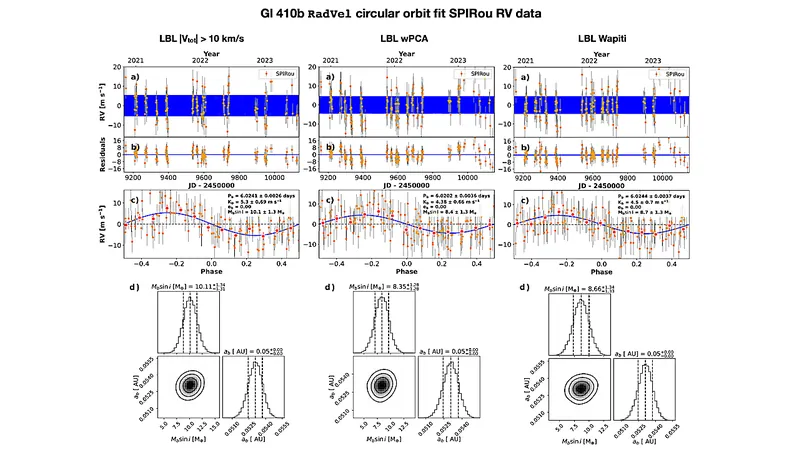
Breakthrough in Exoplanet Discovery: A New Sub-Neptune Planet Found Orbiting Gl 410!
2025-04-07
Author: Rajesh
A major leap in the quest to understand planetary systems near our Solar System has been achieved with the recent detection of a sub-Neptune planet around the nearby M dwarf star Gl 410. As astronomers increase their efforts to map and understand exoplanets, this discovery comes from pioneering work being carried out since 2018 using advanced technologies at the Canada-France-Hawaii Telescope (CFHT) and the Observatoire de Haute-Provence (OHP) in France.
The team utilized two powerful tools: the near-infrared spectro-polarimeter and velocimeter SPIRou, and the optical velocimeter SOPHIE. These instruments worked in concert to measure the radial velocities (RVs) of Gl 410, a star located just 12 parsecs away that is approximately 480 million years old and has a mass of 0.55 solar masses.
Employing innovative techniques, the researchers analyzed the data obtained from these instruments to filter out systematic errors and correct for stellar activity. They applied the line-by-line (LBL) technique along with principal component analysis (PCA) to refine the SPIRou RVs. Notably, Gaussian processes (GP) modeling helped adjust SOPHIE's RVs for stellar activity, ensuring a more precise measurement.
The team successfully identified an exciting find: a planet with a minimum mass of 8.4 Earth masses, confirmed through SPIRou data to have a period of 6.020 days in a circular orbit. However, the TESS satellite observations indicated that this planet is not transiting, meaning it does not pass directly in front of its star from our line of sight.
Moreover, the researchers have spotted potential additional planetary signals at periods of 2.99 days and 18.7 days within the SPIRou data, hinting at an even more complex system around Gl 410.
These findings signify a monumental advancement in exoplanet discovery, showcasing how infrared RV measurements can effectively detect planets around active M dwarfs. However, the study emphasizes the importance of filtering out systematic errors generated by the observational equipment to ensure accurate data interpretation.
As the search for extraterrestrial life continues, future monitoring of Gl 410 is imperative. Each new observation could unveil more about this intriguing planetary system, deepening our understanding of the formation and existence of worlds beyond our own.
This discovery not only adds to our catalog of known exoplanets but also raises new questions about the dynamics and formation of planets around M dwarfs. Stay tuned as researchers from around the globe continue to unearth the secrets of the cosmos!

 Brasil (PT)
Brasil (PT)
 Canada (EN)
Canada (EN)
 Chile (ES)
Chile (ES)
 Česko (CS)
Česko (CS)
 대한민국 (KO)
대한민국 (KO)
 España (ES)
España (ES)
 France (FR)
France (FR)
 Hong Kong (EN)
Hong Kong (EN)
 Italia (IT)
Italia (IT)
 日本 (JA)
日本 (JA)
 Magyarország (HU)
Magyarország (HU)
 Norge (NO)
Norge (NO)
 Polska (PL)
Polska (PL)
 Schweiz (DE)
Schweiz (DE)
 Singapore (EN)
Singapore (EN)
 Sverige (SV)
Sverige (SV)
 Suomi (FI)
Suomi (FI)
 Türkiye (TR)
Türkiye (TR)
 الإمارات العربية المتحدة (AR)
الإمارات العربية المتحدة (AR)